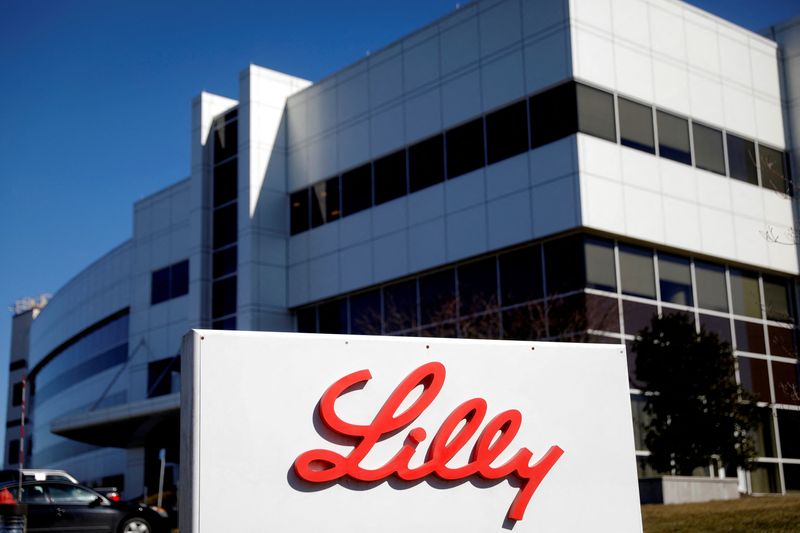By Medha Singh and Manas Mishra
(Reuters) - U.S.-based Eli Lilly (NYSE:LLY) and Denmark's Novo Nordisk (NYSE:NVO) have struck gold with their weight-loss drugs, sending their shares to stratospheric levels and putting them on par with some high-growth tech stocks.
Retail and institutional investors alike have flocked to the two stocks in the past year, as they bet on explosive demand for the companies' obesity drugs, called GLP-1 agonists, in a market that some analysts expect could breach $100 billion.
Shares of both companies trade near record highs, with their valuation multiples at a significant premium to their healthcare peers and almost matching those of high-flying technology and growth stocks.
Lilly shares trade 56.17 times the earnings estimates for the next 12 months, while Novo has a price-to-earnings (PE) multiple of 35.84, according to LSEG data.
The S&P 500 healthcare sector has a PE multiple of 18.7, according to LSEG Datastream. Meanwhile, popular growth stocks - Tesla (NASDAQ:TSLA) and Nvidia (NASDAQ:NVDA) - trade at a PE multiple of 57.78 and 33.89, respectively.
"We believe that Eli Lilly and Novo Nordisk are properly called growth stocks even as they inhabit the large-cap pharmaceutical space, which is more typically a home for value stocks," said Jason Benowitz, senior portfolio manager at CI Roosevelt.
Eli Lilly overtook electric automaker Tesla's market value last month to make it the ninth-largest U.S.-listed company. Novo briefly knocked off luxury French luxury retail giant LVMH as the most valuable European company last year
Eli Lilly, which makes GLP-1 drugs Mounjaro and Zepbound, was worth $719 billion as of Thursday's close.
Novo Nordisk, the maker of blockbuster obesity drug Wegovy and diabetes treatment Ozempic, sports a market capitalization of about $550 billion, including unlisted shares, according to LSEG data.
Lilly's revenue is expected to jump 76% over the next three years to $60.39 billion, while that of Novo is expected to rise 68% to 390 million Danish crowns for the same period, according to LSEG data.
Indeed, Wall Street's sell-side analysts on average expect Eli Lilly's market capitalization to swell 7.4% in the next 12 months, while Novo's valuation is likely to dip 3%.
CFRA Research's Sel Hardy thinks Lilly's diversification due to a spate of recent acquisitions, its investments in research and development and rising sales of cancer drugs are an advantage.
"Since 2023, we're seeing a lot of retail interest in the stock being driven by the GLP-1 boom. But we don't think Lilly is just a GLP-1 story," she said.
The blistering share rally is pinned on the success of the weight loss drugs, and the ability of the companies to grow the rest of their portfolio, although it could sputter if the companies' sales disappoint.

"As with any new blockbuster drug, it is always difficult to appropriately estimate what the total addressable market will be in the coming years," said Art Hogan, chief market strategist at B. Riley Wealth in New York.
Risks to the recent rally include "spiraling costs to expand production capacity, and any indication that product prices could fall sharply," said Dan Coatsworth, investment analyst at AJ Bell.